Africa is the world’s second-largest continent, has some of the most interesting flora and fauna on the planet, and is home to some incredible lakes.
In this post, we’ll take a look at some of the biggest lakes on the African continent, including the largest lake in Africa, and the outstanding Great Lakes’ region of Africa.
11 Biggest Lakes in Africa
Lakes Bigger than 5,000 square kilometers:
1. Lake Victoria
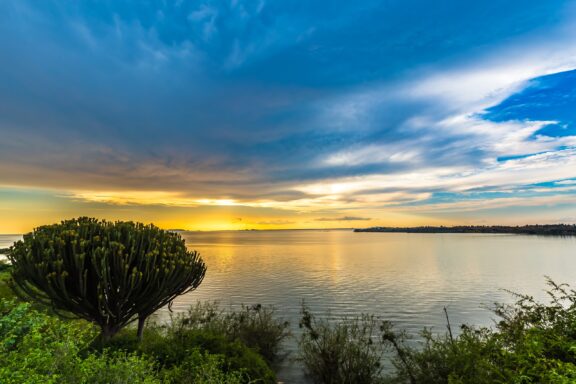
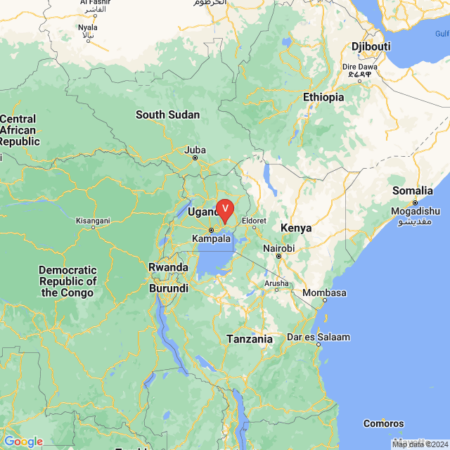
This is Africa’s largest lake and the world’s largest tropical lake. It’s also the second-largest freshwater lake by surface area, second only to Lake Superior in the USA. Lake Victoria has many names in the local languages spoken by the people in Uganda, Tanzania, and Kenya, the three countries that share the lake.
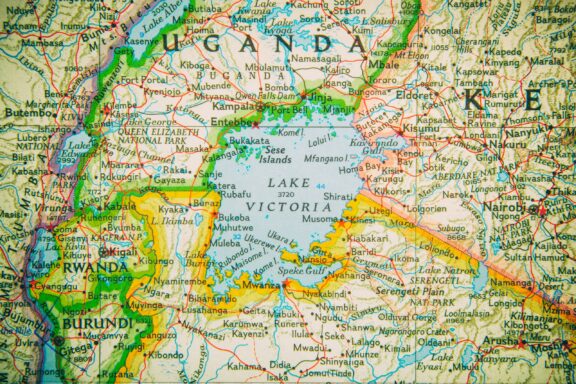
One unique feature of this lake is that it is home to several species of fish that don’t live anywhere else on the planet. This is changing, however, due to the introduction of invasive species such as the Nile Perch. Another invasive species is the water hyacinth plant, which is able to flourish due to the high levels of wastewater runoff into the lake that provide increased levels of nitrogen and phosphorus.
There are many cities and towns that rely on the lake as a key water source, and Uganda has constructed two dams on the lake. It’s also an important means of transport between the countries of Uganda, Kenya, and Tanzania.
2. Lake Tanganyika
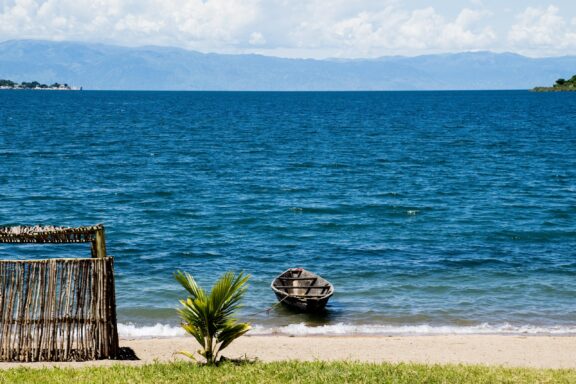
Lake Tanganyika is shared by four different countries in Africa: Tanzania, the Democratic Republic of the Congo (DRC), Burundi, and Zambia. This is the second-largest by volume and second-deepest lake in the world after Lake Baikal in Russia. The lake is so massive that it contains about 16% of all freshwater on Earth.
It’s also one of the world’s oldest ancient lakes, with a central basin that began forming between 9 and 12 million years ago. This makes it the second-oldest freshwater lake on Earth.
Today, the lake supports a major fishing economy and is home to a wide variety of fish, reptiles, birds, and other animals. There are also several ferry ports along the lake.
3. Lake Malawi
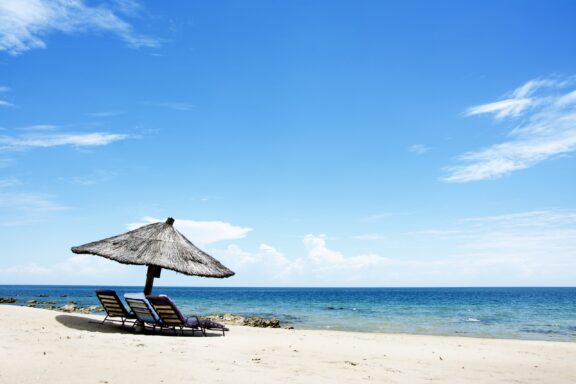
This is one of the Great Lakes in Africa, and it’s shared by Malawi, Mozambique (where it’s known as Lago Niassa), and Tanzania (where it’s known as Lake Nyasa). More species of fish can be found in Lake Malawi than in any other lake in the world. It’s also home to crocodiles, monkeys, African fish eagles, hippopotamuses, and crustaceans.
The lake is also notable for its beauty. There are both sandy and rocky shores lining Lake Malawi, and the clear, deep waters contrast with surrounding hills of granite.
4. Lake Bangweulu
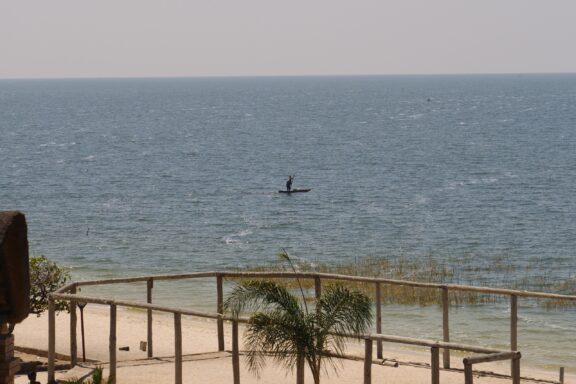
Lake Bangweulu is a large, shallow lake that lies in northern Zambia in the upper Congo River basin. The surface area of the lake changes annually; the swamps and floodplains are flooded after the rainy season in May and contribute to the lakes area. The average depth of Lake Bangweulu is only four meters.
An interesting feature of this lake is that it is naturally divided into three sections by sandy ridges. The lake also has multiple bays, lagoons, inlets, and smaller lakes, giving it a complex shape.
The lake supports the economy of northern Zambia with an active fishing industry and contains several inhabited islands, the largest of which is Chilubi Island.
5. Lake Volta
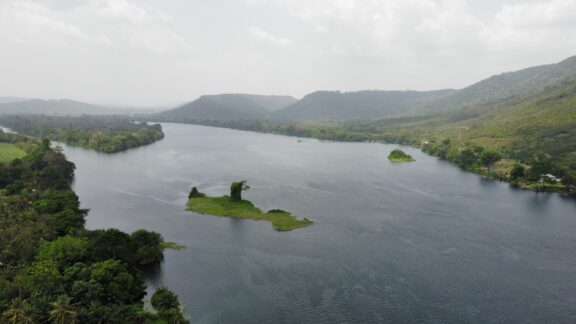
This lake was formed as a result of the construction of the Akosombo Dam in Ghana. It is the largest artificial reservoir in the world by surface area and lies completely within the country of Ghana. Construction of the dam, which provides Ghana with a great deal of its electricity, was completed in 1965. Some 78,000 people and 200,000 animals had to be relocated before the completion of the dam and creation of Lake Volta.
The lake is fed by both the White Volta River and the Black Volta River, and it empties out into the Atlantic Ocean at Ghana’s southern border. There are several islands in Lake Volta, including Dodi Island, a tourist destination and stopping point for cruise ship Dodi Princess.
6. Chott el Djerid
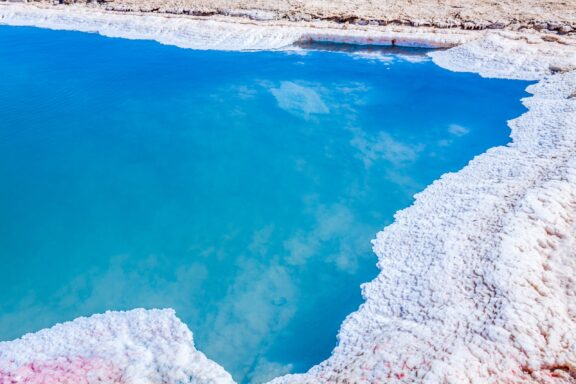
Located in northeastern Africa, Chott el Djerid is a sizable salt lake in Tunisia. In Arabic, the name of the lake means “Lagoon of the Land of Palms.” It is the largest salt pan in the Sahara Desert, and much of the lake dries up in the summer due to the hot desert climate and water evaporation.
Pink flamingos can be found on the shores of the lake, and it was once home to the West African Crocodile. In popular culture, the lake has been used as a set in the filming of the Star Wars movies and has been mentioned or described in several books. It is also the legendary location of the birth of Greek goddess Athena.
7. Chott Melrhir
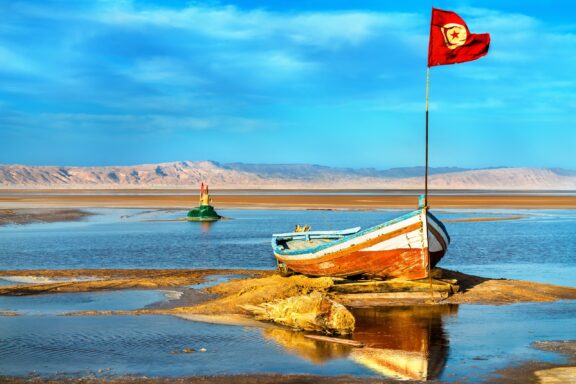
The largest lake in Algeria, Chott Melrhir is a salt lake that lies almost entirely below sea level. It is an endorheic lake, which means there is no outflow of water from the lake into external bodies of water. Instead, water evaporates during summer months when the rivers that feed the lake dry up.
The salty waters of Chott Melrhir make it only habitable by plant species that have adapted to saltwater conditions, and brine shrimp are among the very few animals that live in the lake’s shallow, saline waters.
8. Lake Turkana
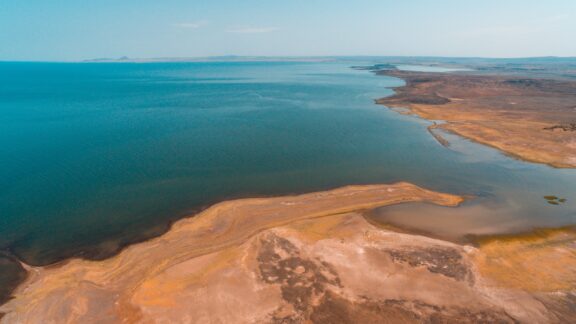
Formerly known as Lake Rudolph, Lake Turkana lies in northern Kenya and crosses into the country of Ethiopia. One thing that makes this lake notable is that it is the world’s largest desert lake. Its high pH level makes it the largest alkaline lake on Earth and largely unsuitable for drinking and irrigation.
Lake Turkana is bordered by shores of mostly volcanic rock, dunes, and sand flats. Central Island, located in the middle of the lake, is an active volcano. There are three rivers that feed into the lake, but water only leaves the lake by evaporation.
A number of anthropological expeditions have taken place around Lake Turkana, some of which led to the discovery of some of the oldest fossils of early human ancestors. The hominin fossils discovered in 1994 by Maeve Leakey date to four million years ago.
9. Lake Rukwa
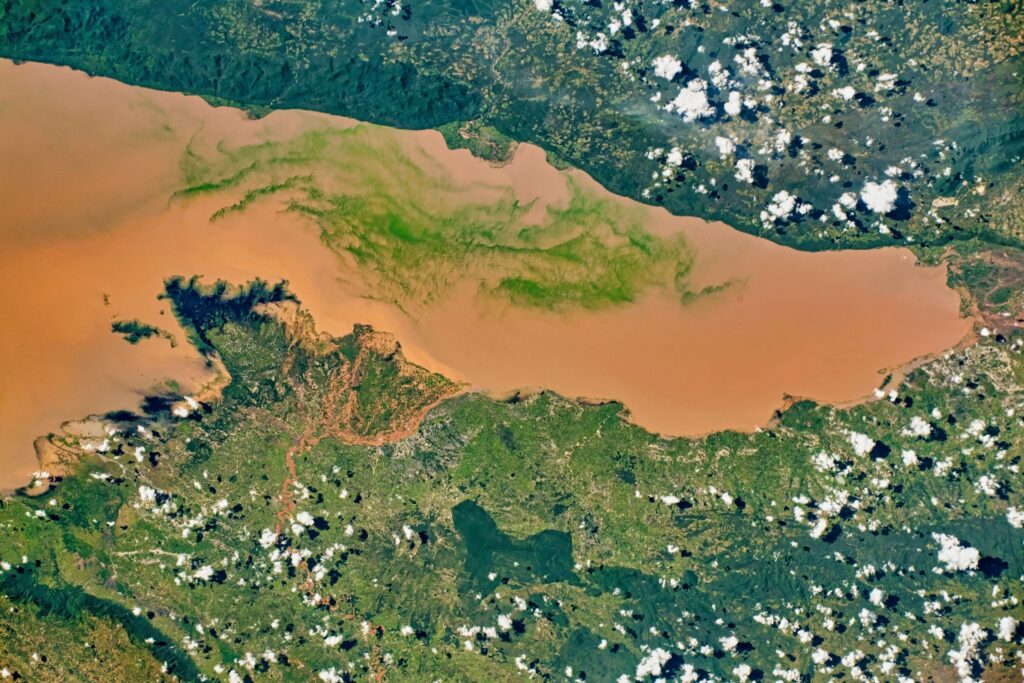
Lying in southwestern Tanzania and covering an area of roughly 2,300 km2 is Lake Rukwa. The size of the lake fluctuates significantly due to changing inflows of water from surrounding streams and has been vastly different at different times in history.
The lake is home to crocodiles, hippopotamuses, and many fish. Commercial fishing is a major part of the local economy. There was also a major discovery of helium gas at the lake in 2016, which is estimated to be worth more than $3 billion.
10. Lake Kariba
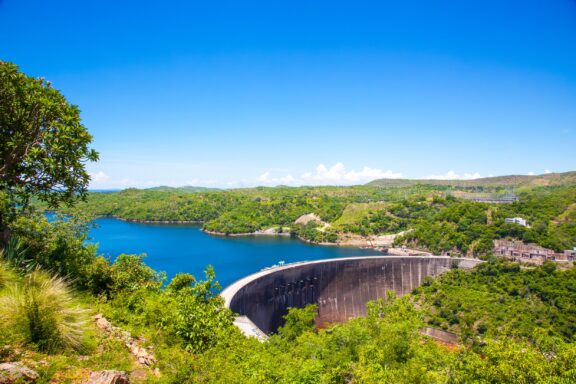
At more than 223 km long and at times 40 km wide, Lake Kariba is the largest manmade lake in the world by volume. It exists on the border between Zambia and Zimbabwe and was created in 1963 after the construction of the Kariba Dam.
Wildlife in and around Lake Kariba is abundant and varied. There are crocodiles and hippopotamuses, and a number of introduced fish species are thriving in the lake. Both Zambia and Zimbabwe are encouraging the growth of tourism around the lake, and the shores of Lake Kariba that fall in Zimbabwe are designated as a Recreational Park by the country’s government.
11. Lake Albert

Lake Albert is the largest of Uganda’s Great Lakes and the seventh-biggest lake in Africa. It also enters the DRC and was previously known as Lake Mwitanzige and Lake Mobutu Sese Seko. It is part of the upper Nile system and is primarily fed by the White Nile and Semliki Rivers.
There are many different animals that call this lake home, including turtles, antelope, crocodiles, and many birds and fish. Fishing in Lake Albert supports at least 30% of fish production in Uganda.
Great Lakes of Africa (Region Map)
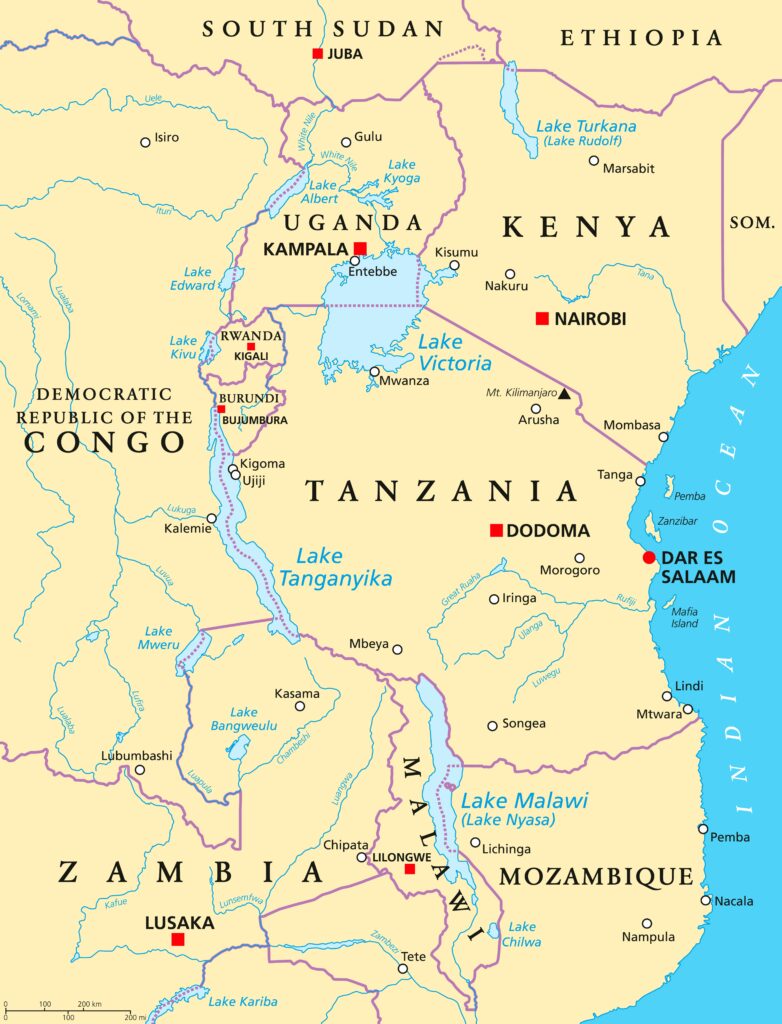
The Great Lakes in Africa are famous for their size, impressive flora and fauna, and importance to the region. The lakes in these regions are shared by ten different African countries, and Swahili is the most commonly spoken language throughout.
The largest of these lakes, by far, is Lake Victoria at 68,800 km2. The next two largest are Lake Tanganyika and Lake Malawi — these three make up some of the largest lakes in the world. Many of the lakes are formed in rifts, areas between two tectonic plates where there is a depression in the Earth.
One of the most notable aspects of the fauna in the Great Lakes of Africa is the prevalence of cichlids, a freshwater fish that is known for complex breeding behavior and other interesting evolutionary characteristics.
There are over 1,500 species of cichlids that are endemic to the Great Lakes. There are also many species of birds, semi-aquatic animals, and large land animals that live around the lakes. Each lake has its own unique animal population.
The lakes also play an important role in local economies by supporting large fishing industries, providing means of transport, and as a draw for tourism. Uganda, one of the countries in the region, ranks among the world’s top producers of freshwater fish.
Image Sources and Copyright Information
- Sunset over Lake Victoria: © Stefan Haider/Shutterstock
- Map Detail Showing Lake Victoria and Surrounding Countries: © Kajzr Photography/Shutterstock
- Boat on the Shores of Lake Tanganyika: © YolLusZam1802/Shutterstock
- Beach Umbrella and Chairs on Sandy Shore by Lake Malawi: © YolLusZam1802/Shutterstock
- Man Canoeing on Lake Bangweulu: © Bennie Chibwe/Shutterstock
- Scenic View of Volta Lake with Lush Greenery: © SEDG Media/Shutterstock
- Vibrant Blue Salt Lake with White Salt Crust Edges: © Lukasz Janyst/Shutterstock
- Boat on Salt Lake Shore with Flag: © Leonid Andronov/Shutterstock
- Aerial View of Lake Turkana Shoreline: © Moiz Husein/Shutterstock
- Aerial View of Lake Rukwa in Tanzania: © NASA/Shutterstock
- Kariba Dam and Reservoir Landscape: © Lynn Yeh/Shutterstock
- Hippos in Lake Albert: © Chris Renshaw/Shutterstock